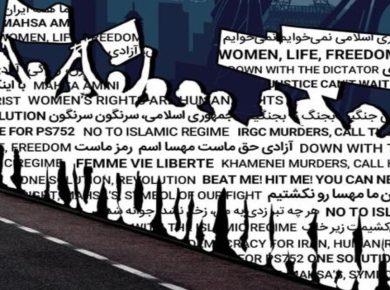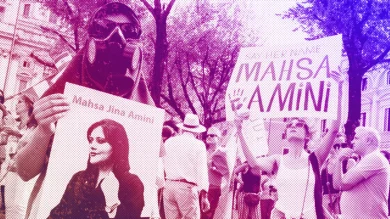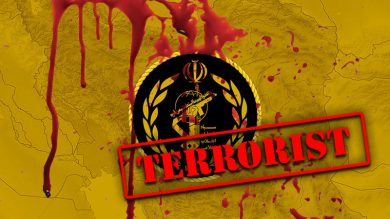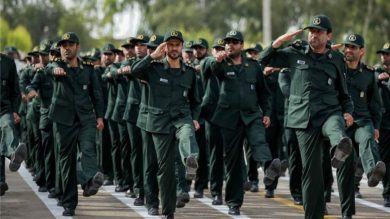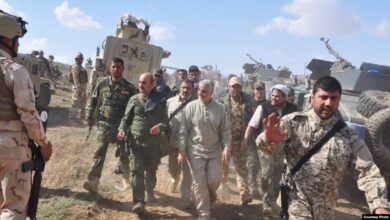The Islamic Revolutionary Guard Corps (IRGC) has long been a central actor in Iran’s strategy to expand its influence across the Middle East. Through proxy wars, the IRGC supports armed groups, funds militias, and engages in activities that destabilize the region. Its tactics allow Iran to project power while avoiding direct confrontation, making the IRGC a key driver of instability in countries such as Lebanon, Iraq, Syria, and Yemen. These proxy wars have not only prolonged conflicts but also deepened sectarian divides and created severe humanitarian crises.
This report provides an in-depth analysis of the IRGC’s role in Middle Eastern proxy wars, the mechanisms it employs, and the broader consequences for regional and global security
1. The IRGC’s Strategy in Proxy Wars
A. Objectives of Proxy Warfare
Expanding Regional Influence: The IRGC uses proxy forces to advance Iran’s ideological and strategic goals, countering U.S., Israeli, and Saudi influence in the Middle East.
Asymmetric Warfare: By supporting non-state actors, the IRGC reduces the risks and costs of direct military engagement while extending its reach across borders.
Exporting the Revolution: A core mission of the IRGC since its inception has been to promote Iran’s revolutionary ideals, particularly among Shia populations.
B. The Role of the Quds Force
The Quds Force, the IRGC’s elite unit for extraterritorial operations, oversees the training, arming, and funding of Iran’s proxies.
Under its late commander Qassem Soleimani, the Quds Force became highly effective in coordinating operations with groups across the region.
2. Key Proxy Groups Supported by the IRGC
A. Hezbollah (Lebanon)
Overview: Hezbollah, founded in the 1980s with IRGC support, is one of the most prominent proxies.
Support: The IRGC provides Hezbollah with financial resources (estimated at $700 million annually), advanced weaponry, and military training.
Impact: Hezbollah’s military presence destabilizes Lebanon and poses a significant threat to Israel, while its involvement in Syria has prolonged the civil war.
B. Shia Militias in Iraq
Overview: The IRGC has cultivated relationships with numerous Iraqi militias, including Kata’ib Hezbollah and Asa’ib Ahl al-Haq.
Support: These groups receive funding, weapons, and strategic guidance from the IRGC.
Impact: They undermine Iraq’s sovereignty, contribute to sectarian violence, and target U.S. forces stationed in the country.
C. Houthis (Yemen)
Overview: The IRGC backs the Houthi rebels in Yemen’s civil war, aligning with their anti-Saudi stance.
Support: The IRGC supplies weapons such as drones and ballistic missiles and provides training to Houthi fighters.
Impact: This support has intensified Yemen’s humanitarian crisis and escalated tensions with Saudi Arabia and the UAE.
D. Pro-Assad Forces in Syria
Overview: The IRGC has been instrumental in propping up Bashar al-Assad’s regime during Syria’s civil war.
Support: The IRGC has deployed militias, provided financial assistance, and coordinated with Hezbollah to maintain Assad’s grip on power.
Impact: The IRGC’s involvement has prolonged the conflict, displaced millions, and created fertile ground for extremist groups.
3. Tactics Used by the IRGC in Proxy Wars
A. Training and Arming Militias
The IRGC trains proxy forces in guerilla warfare, urban combat, and the use of advanced weaponry, such as precision-guided missiles and drones.
Training camps in Iran and other countries provide ideological indoctrination alongside military instruction.
B. Financial Support
The IRGC allocates billions of dollars annually to its proxies, funding their operations and ensuring loyalty to Tehran’s agenda.
Smuggling networks and sanctions evasion generate additional revenue to sustain these activities.
C. Intelligence and Strategic Guidance
The IRGC provides intelligence, logistical support, and strategic advice to its proxies, enhancing their operational effectiveness.
Quds Force operatives often embed themselves with these groups to coordinate activities.
D. Information and Propaganda Campaigns
The IRGC amplifies its influence through disinformation and propaganda, using media channels to justify its actions and rally support for its proxies.
4. Regional Impacts of IRGC Proxy Wars
A. Prolonging Conflicts
The IRGC’s support for armed groups has extended conflicts in Yemen, Syria, and Iraq, preventing political resolutions and exacerbating humanitarian crises.
B. Sectarian Divisions
By backing Shia militias, the IRGC has deepened sectarian divides, fueling tensions between Sunni and Shia communities across the region.
C. Threats to State Sovereignty
IRGC-supported militias operate outside government control in countries like Iraq and Lebanon, undermining state institutions and fostering instability.
D. Escalation of Regional Rivalries
The IRGC’s activities have heightened tensions with regional powers such as Saudi Arabia and Israel, increasing the risk of broader conflict.
5. Global Implications of IRGC Proxy Wars
A. Destabilizing Global Energy Markets
Attacks on oil infrastructure and shipping routes linked to IRGC proxies threaten global energy supplies and economic stability.
B. Humanitarian Crises
The IRGC’s involvement in Yemen and Syria has contributed to massive displacement, famine, and suffering, burdening international relief efforts.
C. Undermining International Security
The IRGC’s support for terrorist organizations like Hezbollah increases the risk of attacks on civilians and infrastructure worldwide.
6. Responses to the IRGC’s Proxy Wars
A. Sanctions
The U.S. and its allies have imposed sanctions targeting IRGC leaders, affiliated organizations, and financial networks.
Sanctions aim to disrupt the IRGC’s ability to fund and arm its proxies.
B. Military Deterrence
Regional coalitions, such as those led by Saudi Arabia and Israel, have conducted military operations against IRGC proxies and weapons shipments.
The 2020 killing of Qassem Soleimani weakened the Quds Force’s leadership but did not eliminate its influence.
C. Diplomatic Efforts
Multilateral forums have sought to address conflicts fueled by the IRGC, though efforts have been hindered by geopolitical rivalries.
7. Recommendations for Addressing IRGC Proxy Wars
A. Strengthen Sanctions Enforcement
Enhance international cooperation to close loopholes in sanctions targeting the IRGC’s financial networks and arms transfers.
B. Support Regional Stability
Invest in rebuilding governance and infrastructure in conflict-affected countries to reduce the IRGC’s influence.
C. Counter Disinformation
Develop coordinated strategies to combat IRGC propaganda and amplify credible narratives that expose its destabilizing role.
D. Promote Accountability
Pursue international investigations and legal action against IRGC leaders and proxies responsible for war crimes and human rights violations.
Conclusion
The IRGC’s role in proxy wars has entrenched its influence across the Middle East, leaving a trail of instability, conflict, and humanitarian crises. By funding and arming groups like Hezbollah, the Houthis, and Shia militias, the IRGC perpetuates violence and undermines regional and global security. Addressing this challenge requires a multifaceted approach, including sanctions, military deterrence, and diplomatic engagement, to counter the IRGC’s tactics and promote stability in the region. Through sustained efforts, the international community can mitigate the IRGC’s influence and pave the way for peace in the Middle East.
Join Our Newsletter!
Stay informed with the latest updates, news, and ways to take action in the fight for justice and global security. Sign up now to get updates delivered straight to your inbox!

